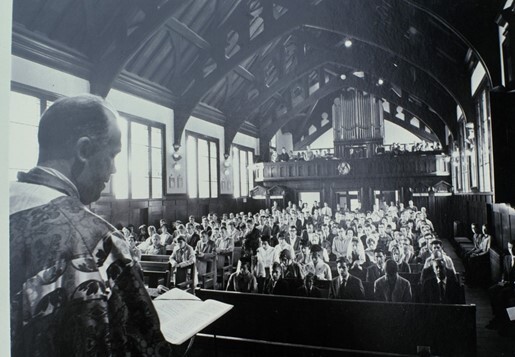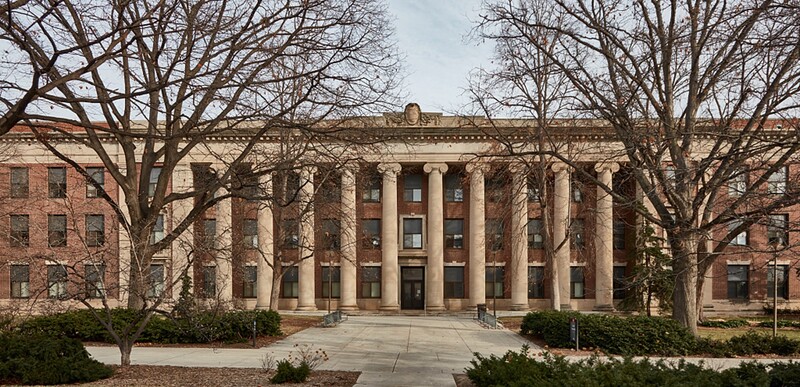Controversies of the School of Religion and the Precedent Set by UNL’s Religious Department
Ella Heng, History 250: The Historian Craft, Spring 2024
School and religion have historically gone hand in hand whether it was either mandated by the government or influenced by community beliefs. However, in the United States there is a required separation of church and state. While this does not mean that religion cannot be taught in any school, it establishes that any singular religion cannot be taught as truth in schools supported by taxes. The total exclusion functioned to some degree for many years, yet in the 1960’s colleges and universities began looking at religion in a critical light and the study of religion began to shift into popularity. People stood on either side of this issue as some wished for religion to remain outside of public universities and others agreed it should be studied. Even though religion is difficult to teach, the University of Nebraska Lincoln’s addition of the school of religion was successful due to the support they received from the community and the criticism they heeded demonstrating their ability and responsibility to continue pushing the bounds on what is taught.
When people began to study religion academically and the idea of a department, at the time called the School of Religion, was proposed by the University of Nebraska Lincoln there was a clear religious majority both on campus and in the surrounding Lincoln area, yet change was imminent. “The 1960s proved a turning point for religious life”[1] as people rebelled against the dominant religions of the United States: Congregationalists, Episcopalians, Baptists, Disciples, Lutherans, Methodists, and Presbyterians. Religion, especially the mainstream few, had sat above reproach for years but people in the 1960’s were living in a society fraught with change and dramatic shifts. Protests against the Vietnam War were frequent and new styles of life became popular. People were questioning society in new ways and this lead to new religions gaining wide spread traction as well. Buddhism, Hinduism, and some forms of spiritual yoga gained popularity across the country and scholars questioned why. Their research led to studying religion as a whole and investigated even the well-established religions. On the University of Nebraska Lincoln’s, henceforth to be regarded as UNL, campus,students still largely fell under the Christian umbrella, yet there was an incredulity present which allowed religious studies to become popular.
Religious departments began on shaky ground as schools wanted to implement the new focus but were “unaware of or confused about the legal issues involved in religion and spirituality on college campus”. [2] Whether a campus could even approach teaching religion in a classroom or not was questionable – especially for schools funded by taxpayers who certainly did not want student to be taught religions they did not believe in. It is certainly a difficult issue to approach as no person wants their beliefs to be dissected and treated as if false yet the need to understand such a global phenomenon is obvious. As schools began to analyze religion in new ways people were seeing patterns. People at the time who were rebelling against the religious norm looked at it as evidence they were right and that religion was not as true as it had been advertised to be while others who supported and practiced religion wanted more to be known, but often felt theirs should be taught differently and held to the exception. The study is further complicated as it covers such a swath of history and is a “product of sociology, anthropology, psychology, and other disciplines”.[3] These layers made it a fascinating topic and garnered support and controversy from many within UNL’s campus and in the local area.
The Daily Nebraskan, a prominent local newspaper, ran several articles about the imminent department and touted how it would enable students to study religion within “a historical, cultural, and philosophical context” which would “neither promote nor attack religion”.[4] Another article by writer Carl Stuart was clearly titled Religion School Requested wherein he noted there is “definite interest in the student body”.[5] Many people were excited with the idea of learning about religion in a new light since it had largely been left outside of academic circles in recent years. UNL heeded the desire and growing anticipation and decided to move forward with the formation of the School of Religion. However, these promising signs were also combated by people who questioned the need and legality of a potential religious department in any school.
The issue of whether teaching religion would even be permitted in a public university was called into question several times and the Chancellor addressed people directly as he said “some of the campus pastors feel that I, the Chancellor, and Dean Militzer are opposed to teaching religion. This is unfounded, unwanted, and untrue”.[6] People feared it would become either slander of religion as a whole or teach it as fact. In the United States, schools funded by taxpayers cannot show support for any religion over another which provided the legal ground for lawsuits. The legal question was so great it came up to the supreme court who “emphasized the distinction between inculcation of religious beliefs and habits (through devotional exercises) and the objective study of religion”.[7] The ruling enabled universities to approach religion in a revolutionary light – teaching it from a philosophical angle. UNL listened to people with concerns and abided by the new legal definitions in order to teach religion in a way which fit people’s needs the best. While they did not fill the desire of specific religious groups to teach only their religion, they did work alongside the community to fill the void with a study of the pattern of thinking behind religion rather than to tear it apart.
UNL listened to the concerns people held and decided to move forward with the school of religion. They believed the study of religion was needed in school and drew their focus to the psychology and history rather than debating the fact of any religion. Today, the religion department seeks to “acquaint students with the world's religious traditions, great and small, their histories, sacred writings, and how they are practiced and lived in the world today”.[8] Teaching religion allows students to better understand the variety of people and beliefs around them and is needed to maintain a school’s status. Excluding areas of learning due to controversy lends itself to the echo chamber people often find themselves in and leads to the sanitation of ideas outside the mainstream. Schools should venture to keep pushing for new angles and ways of learning, especially colleges like UNL.
Limiting the growth of ideas may make it easier for an institution to market itself at the moment, but if fear of expanding becomes a cultural norm continued learning will halt. The University of Nebraska Lincoln moved with the times in the 1960’s and 1970’s with the School of Religion to understand the world in a new way. There were questions at the time on whether or not it would be acceptable or legal, but UNL moved forward with the community. In more recent years it has done so again with women’s and gender studies which have also been controversial but enable students to learn what was previously hidden and misunderstood. There can be no certain way of telling what future areas of study will come forth or how people will react to them, but the University of Nebraska Lincoln needs to stand by its precedent of pushing the limits of education.
Bibliography
Beckman, Joanne. “Religion in Post-World War II America.” National Humanities Center, October 2000. https://nationalhumanitiescenter.org/tserve/twenty/tkeyinfo/trelww2.htm.
Lowery, John Wesley. “Understanding the Legal Protections and Limitations Upon Religion and Spiritual Expression on Campus” The College of Student Affairs Journal, 2004. https://files.eric.ed.gov/fulltext/EJ956984.pdf. (accessed Apr. 8, 2024).
Love, Macy. “Theory Outside of the Lecture Hall: Expanding Undergraduate Religious Studies Courses Through...” Medium, August 12, 2023. https://medium.com/@macylove1999/theory-outside-of-the-lecture-hall-expanding undergraduate-religious-studies-courses-through-2d0b47d28ba4.
Beck, Chuck. “Merger Enables Some to Minor in Religion.” The Daily Nebraskan. January 13, 1975. https://nebnewspapers.unl.edu/lccn/sn96080312/1975-01-13/ed-1/seq-18/#words=enables+Merger+minor+religion+some. (accessed Apr. 8, 2024).
Stuart, Carl. “Religion School Requested,” July 26,1966. https://nebnewspapers.unl.edu/lccn/sn96080312/1966-07-25/ed 1/seq 2/#words=Religion+Requested+School. (accessed Apr. 8, 2024).
“Welcome.” Department of Classics and Religious Studies | College of Arts and Sciences, April 3, 2024. https://www.unl.edu/classics/. (accessed Apr. 8, 2024)



